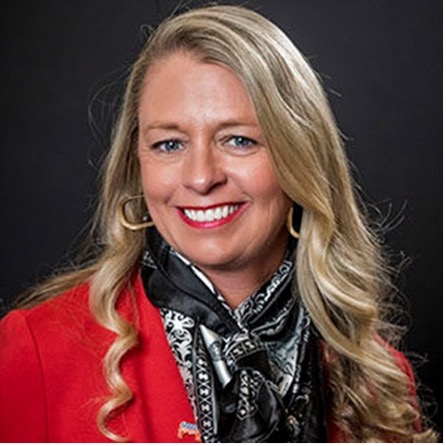U.S. beef farmers and ranchers are committed to continuous improvement to the land, water and health of their animals, producing high-quality beef for decades. As a result, the U.S. leads the world in greener solutions in beef production, with the lowest beef greenhouse gas emissions intensity globally since 1996.123 By focusing on the well-being of the land, their livestock, and their local communities, beef producers have enhanced efficiency while conserving the natural resources under their care.
Built on Three Pillars
Sustainability can be a broadly used term, most often associated with environmental efforts – but smarter, greener practices extend beyond that, balancing three pillars: social responsibility, economic viability and environmental stewardship. Together, these pillars highlight how beef farmers and ranchers lead with purpose.
- Environmental Stewardship: Between 1961 and 2019, U.S. beef producers have reduced greenhouse gas emissions per pound of beef by over 40 percent while producing 75 percent more beef per animal.12345
- Economic Viability: Sustainable operations are also smart business. By improving efficiency, producers are increasing profitability while feeding more people.
- Social Responsibility: The beef community strengthens rural economies, improves livelihoods, and upholds traditions. It’s about family, neighbors and legacy.
These pillars are being implemented daily on the farm and ranch, positioning U.S. beef producers as global leaders in responsible beef production. Many ranchers actively enhance wildlife habitat and improve the health of their rangeland, and as caretakers of nearly one-third of all U.S. land,6 preserving ecosystems isn’t just a responsibility, it’s a way of life.
Consumer Education and Outreach
Just as beef producers have long prioritized raising cattle with care and common sense, the Beef Checkoff has mirrored that commitment, working to drive demand for beef and build consumer confidence in beef and beef products. Consumer perception of beef remains high, with more than 90 percent of consumers expressing a positive to neutral perception of beef as a protein.7 Still, when making a purchasing decision, 70 percent of consumers consider how an animal is raised.7 This data proves that sharing the sustainability story remains crucial. That’s why the Beef Checkoff continues to communicate the positive, measurable efforts of beef farmers and ranchers.
Firstly, all sustainability information shared with consumer audiences is backed by science. The Beef Checkoff funds research that proves how, when properly managed, cattle operations can improve soil health, support carbon sequestration and protect native grasslands. This Checkoff-funded research defends beef’s reputation when misinformation is shared or there’s environmental scrutiny.
From there, the Beef Checkoff takes a proactive approach, staying ahead of issues that could impact consumer perceptions through a two-pronged education and outreach effort. The ultimate goal is to connect and engage with people before false or misguided information about beef production practices spreads. Then, the Checkoff can share the research-backed facts.
Here are just a few examples of what the Beef Checkoff does to educate and inform others about beef production:
- Developing educational units for middle and high schools: By connecting with young minds, the Checkoff can educate tomorrow’s beef consumers today. Educational units focus specifically on greenhouse gases and cattle, as well as general beef production and genetics.
- Hosting On The Farm STEM events: The Beef Checkoff funds annual educator immersion events designed to bring inner city teachers to real, working farms to learn about beef production.
- Taking part in New York City Climate Week: Beef is an active voice during Climate Week, the largest global climate event. Checkoff-funded It’s What’s For Dinner. hosts webinars and shares resources on how beef can be a climate-smart food and provides science on emissions.
- Collaborating with the Beef Expert Network: The 50 influencers who make up the Checkoff’s Beef Expert Network are all passionate about sharing beef’s story and connecting with their audiences to address misinformation surrounding beef.
- Sharing information via digital campaigns: Checkoff-funded digital campaigns on Connect TV, YouTube, websites and social platforms encourage consumers to rethink the ranch. Real beef producers share their beef stories and how they care for their cattle and land through series like “Voices of the Outdoors.” This video series connects ranchers with outdoor enthusiasts, and they come together over their shared belief in taking care of the land.
The Beef Checkoff is working to make sure folks hear the real story about how farmers and ranchers raise beef – honest, transparent and straight from the pasture. It’s about showing the care and commitment that is put in every day. Want the facts? Visit beefresearch.org to learn more.




 This event is unique because it engages audiences across multiple industries and focuses, with producers at the forefront of this event actively participating in conversations. One such producer was Cattlemen’s Beef Board member Kristy Arnold from Screven, Georgia. As a third-generation owner and operator of her cow/calf operation, Arnold knows firsthand the need for responsible antibiotic use on the ranch.
This event is unique because it engages audiences across multiple industries and focuses, with producers at the forefront of this event actively participating in conversations. One such producer was Cattlemen’s Beef Board member Kristy Arnold from Screven, Georgia. As a third-generation owner and operator of her cow/calf operation, Arnold knows firsthand the need for responsible antibiotic use on the ranch.